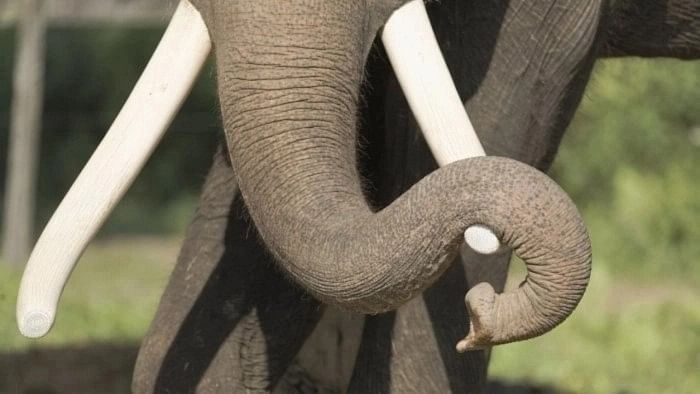
SM Sahai, the Chief Wildlife Warden of Meghalaya, told PTI that the elephant population estimation using the new methodology is taking some time.
Credit: iStock Photo
New Delhi: India will have to wait until June next year for the results of the latest elephant census, as the population estimation has been delayed in some northeastern states, sources said.
Wild elephants are found in forested, hilly tracts across four regions of India: the foothills of the Himalayas in the north, the northeastern states, east-central India, and the Western and Eastern Ghats in the southern parts of the country.
A source told PTI that data collection and analysis from the northeast have not yet been completed.
The primary reasons for the delay in the region are "heavy monsoon rains, floods and the limited capacity" of the forest staff, the sources added.
The entire process involves creating shapefiles, capacity building, data collection, and data processing.
As a result, the numbers from the latest elephant estimation exercise will only be available by June next year, they said.
An official from the Wildlife Institute of India (WII) said satellite data for elephant population estimation had to be collected during the first phase of the tiger population estimation since the two exercises have been converged now.
"But that could not happen in the northeast. We are doing it now. The WII will train the staff in northeast in September-October. They will collect Phase 1 data in November-December and send it to the institute," the official said.
SM Sahai, Chief Wildlife Warden of Meghalaya, told PTI that the elephant population estimation using the new methodology is taking some time.
Sandeep Kumar, Chief Wildlife Warden of Assam, said in addition to the difficult terrain, monsoonal rains, and floods, the exercise took longer because the department also included revenue areas frequented by elephants, along with forest areas.
In 2021, the Union environment ministry announced a new methodology for conducting the census collecting and analysing DNA samples from elephant dung, supplemented by camera trap results.
According to officials, previous elephant censuses primarily involved a head count of the animals across the country.
The new scientific approach will enhance understanding of the species and the challenges they face. For example, DNA profiling of elephants will help curb the illegal smuggling of their body parts, strengthening prosecution efforts.
India is home to more than 60 percent of the world's wild Asian elephants. The country has been conducting five-year elephant censuses since 2022.
According to the census conducted in 2017, India has 29,964 elephants spread across an area of 110,000 sq km, of which 65,000 sq km constitute the country's 33 elephant reserves.
The northeast region of India is home to 10,139 elephants, while the east-central region has 3,128, the northwest has 2,085, and the southern region has 11,960. Karnataka leads with 6,049 elephants.
According to government data presented in Parliament in the Monsoon Session, India lost 528 elephants in the past five years due to unnatural causes, including poaching, poisoning, electrocution, and train accidents.
Human-elephant conflict resulted in 2,853 human deaths in India during this period, with the number of fatalities reaching a five-year high of 628 in 2023.